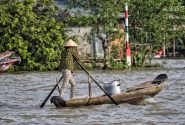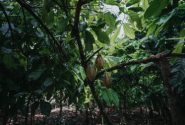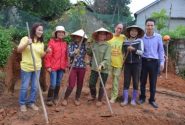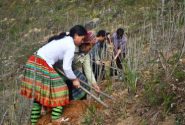JEJU, South Korea (11 September, 2012)_Growing populations in the Lower Mekong region of Vietnam could undermine sustainable conservation efforts unless measures are taken to ensure development activities do not overrun local capacity.
As the number of people living in protected areas increases, so too does agricultural intensification, infrastructure expansion, hunting and logging, along with associated threats, such as forest fires.
“An expansion of the local population will put some pressure on the national parks, but what’s more important are the changes in lifestyle to more unsustainable practices,” said Luke Preece, PhD student at Charles Darwin University and co-author of Evidence-based Conservation: Lessons from the Lower Mekong launched at the IUCN World Conservation Congress yesterday.
Protected areas are the first, and often only, line of defence in efforts to protect biodiversity. Their potential to benefit or harm local communities depends on how they alter both economic opportunities and access to natural resources. As such, protected areas may attract or repel human settlement. Disproportionate spikes in population growth near protected area boundaries may also threaten their ability to conserve biodiversity.
Vietnam is one of the most densely populated agricultural states on the planet, according to World Development Indictors. Just less than three-quarters of its 88 million people live in rural areas, of which nearly a fifth live in poverty. A disproportionate number of these rural poor are ethnic minorities, who tend to live in protected areas.
Cat Tien National Park (CTNP), in Southern Vietnam, is home to around 200,000 people who depend on the forest for their livelihoods. Although prohibited from extracting resources from the nature reserve, most locals generate income through forest-based activities such as agriculture, rearing livestock and fisheries.
While some residents are original forest inhabitants, many migrated to the area in the 1990s when the government declared it a ‘new economic zone’. By prioritising forests as areas of potential production, this echoed the then government policy to create conditions for rapid economic growth which, in turn, saw a dramatic drop in nation-wide poverty rates.
Yet the park’s history has also been marred by catastrophes. Intensive spraying of herbicides during the Second Indochina War left irreparable damage to many areas. In addition, extensive logging and poaching recently caused the extinction of the only remaining Javan rhinoceros population in mainland Asia.
Human activities continue to put CTNPs biodiversity at risk. Agricultural activities, including short-cycle shifting cultivation and land conversion, have destroyed natural habitats and helped invasive species to spread. Compounding the problems are the park’s confusing tenure laws, which give rise to inefficiencies and poor coordination as a result of allocating land management responsibilities to a handful of different government bodies.
Across many of Vietnam’s 30 national parks, the picture is just as bleak.
In Song Thanh Nature Reserve, agricultural needs are pushing local people to encroach on forest land. Plans to expand rubber plantations and establish a new economic zone nearby will likely only exacerbate the advance. While laws exist to punish violations of forest, environmental and biodiversity protection regulations, these do not apply to the park as it has not yet been officially classified as a nature reserve.
“This means that there is little authority to enforce the regulations that are in place, so the local people will continue to exploit forest resources to the detriment of biodiversity,” Preece said.
Meanwhile, newly established protected area Hoang Lien – Van Ban Nature Reserve also faces environmental challenges. While agricultural activities carried out by its resident population are mainly for subsistence, the increasing popularity of forest clearance for cardamom and cinnamon cultivation is becoming a major concern.
Despite attempts to split the reserve into zones – strictly protected, ecological restoration and service administration – gaps in existing regulation and poor coordination between management groups means loopholes have emerged that can be easily exploited.
To effectively tackle population problems, the authors argue Vietnam’s parks must support the people living within its borders so they can achieve sustainable livelihoods.
And while resettlement may be considered a drastic solution, Preece said it is important to protect the significant natural values of the park.
“There were villages right in the middle of the park that fragmented the forest, spread weeds and put pressure on forest resources.”
But it must be carried out in a way that is both socially and economically viable, he said.
“Past experience has shown that the people who were relocated lost their livelihoods and were not properly compensated for the relocation. While they were given agricultural land and housing in the buffer zones, they were not given enough finances to support their families and were not skilled in agricultural techniques to produce for themselves.”
“Future relocations need to properly compensate and train relocated peoples,” he concluded.
To get your copy of Evidence-based Conservation: Lessons from the Lower Mekong please click here.
Edited by Michelle Kovacevic and Robin McDowell.
This new publication is part of CIFOR’s research program on Forests, Trees and Agroforestry and was supported by the MacArthur Foundation.
We want you to share Forests News content, which is licensed under Creative Commons Attribution-NonCommercial-ShareAlike 4.0 International (CC BY-NC-SA 4.0). This means you are free to redistribute our material for non-commercial purposes. All we ask is that you give Forests News appropriate credit and link to the original Forests News content, indicate if changes were made, and distribute your contributions under the same Creative Commons license. You must notify Forests News if you repost, reprint or reuse our materials by contacting forestsnews@cifor-icraf.org.













